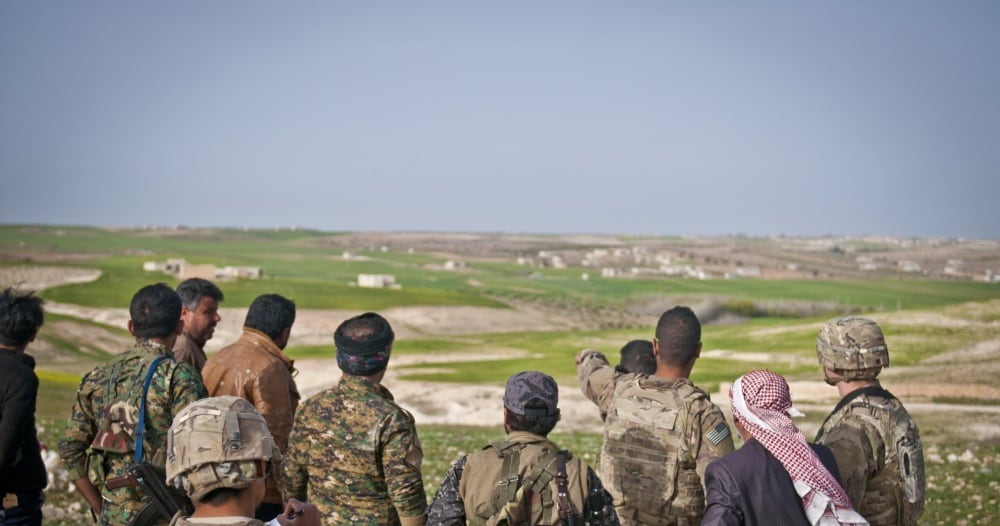The final pockets of Islamic State fighters in Syria are hundreds of miles from the northern Syrian town of Manbij, but U.S. forces will remain there to prevent ISIS fighters from returning, the Pentagon said Tuesday.
The U.S. will say publicly it has about 2,000 troops in Syria. An untold number of them are concentrated around Manbij. The city is located in the north, near the Turkey-Syria border and has become a hot spot for potential skirmishes between Turkish forces and the Kurdish-partnered forces the U.S. has worked with to drive ISIS from the country.
While most ISIS fighters are located farther south and along the Syria-Iraq border, Manbij is still vulnerable to ISIS resurgence, Dillon said.

On March 30, Master Sgt. Johnathan Dunbar, 36 and a British service member were killed by an IED near Manbij. The patrol was tracking an “ISIS high-value target” in the area at the time, said Operation Inherent Resolve spokesman Col. Ryan Dillon.
The military is still investigating the cause of the two coalition deaths, Dillon said, but added that “there’s enough evidence to lead us to believe that it very much was an ISIS-implanted IED based off of the mission that they were doing.”
RELATED

The bulk of the remaining ISIS fighters are located in two areas: along the Syria-Iraq border around the town of Haijin, in the Euphrates River Valley north of Abu Kamal, and just west of Deir ez-Zoir.
Dillon would provide no figures on the numbers of ISIS fighters remaining in the country.
Turkish president Recep Erdogan has repeatedly challenged the coalition’s presence in Manbij and vowed to remove many of the same fighters the U.S. has worked with from the border region.
Dillon said the U.S. presence in Manbij would continue.
“Even though ISIS is not, you know, flying their black flag in certain areas, that doesn’t mean that it is not a threat in these areas,” he said.
Tara Copp is a Pentagon correspondent for the Associated Press. She was previously Pentagon bureau chief for Sightline Media Group.




